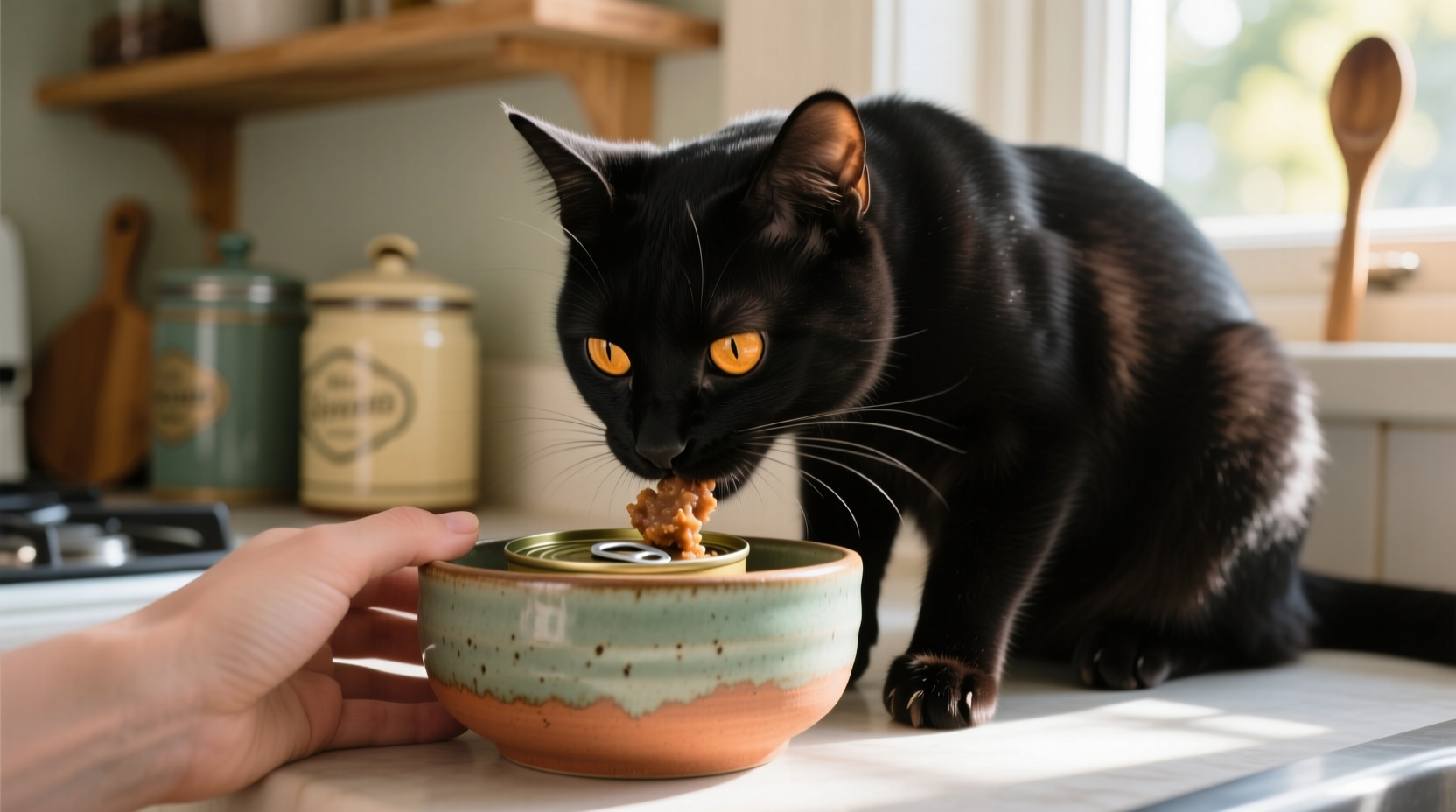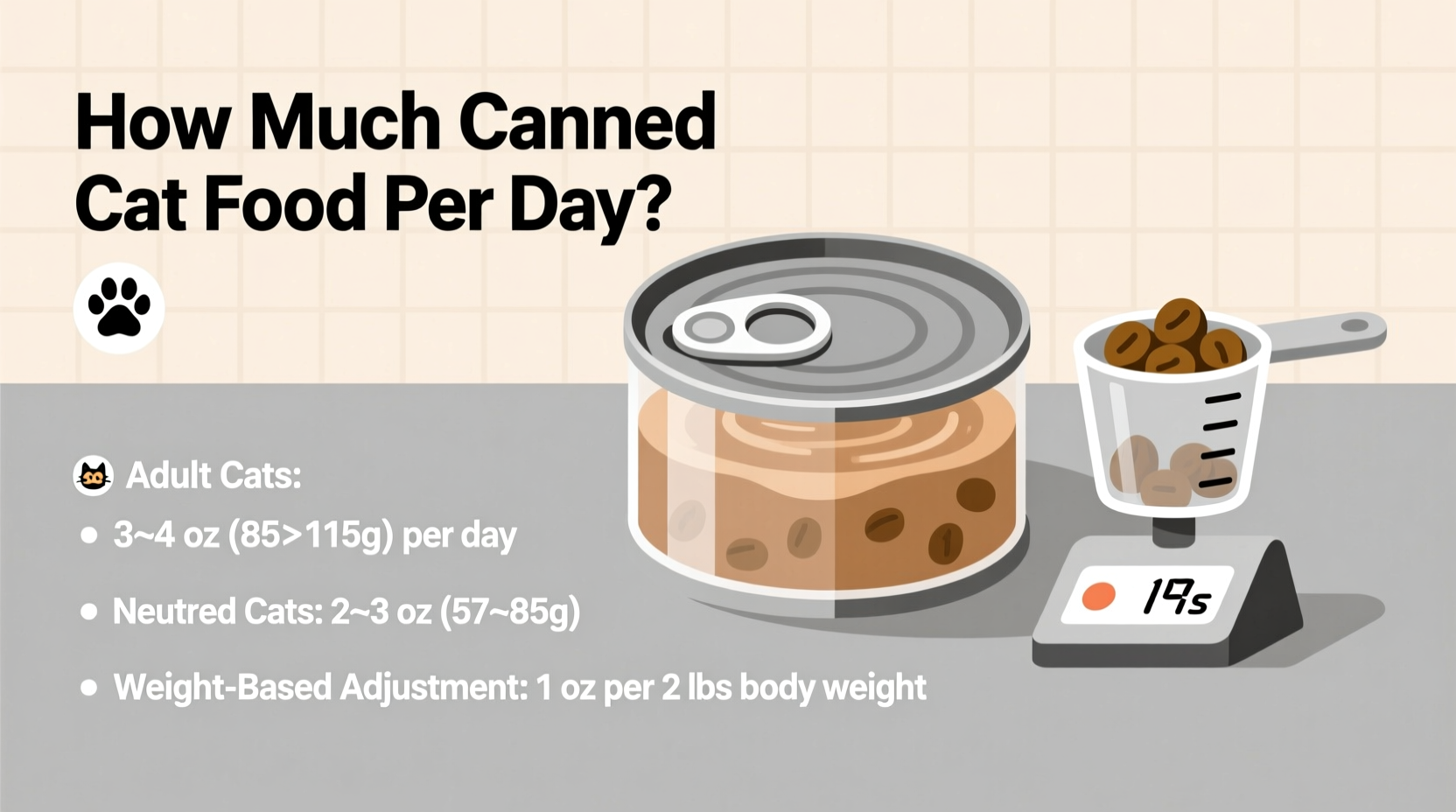Most adult cats need 4-6 ounces of canned cat food daily, divided into two meals. However, the exact amount varies based on your cat's weight, age, activity level, and health condition. A 10-pound cat typically requires 5-5.5 ounces per day, while kittens may need up to 8 ounces spread across 3-4 feedings.
As a cat owner, you've probably wondered: "How much canned cat food per day is actually right for my feline friend?" Getting this balance wrong can lead to obesity or malnutrition—both serious health concerns. This guide provides science-backed feeding recommendations from veterinary nutritionists, helping you determine the precise portion your cat needs based on individual factors.
Why Standard Canned Cat Food Portions Vary
Cat nutrition isn't one-size-fits-all. Unlike dogs, cats are obligate carnivores with specific protein requirements that canned food helps fulfill. The American Animal Hospital Association (AAHA) emphasizes that feeding guidelines must account for:
- Metabolic differences: Indoor cats burn 20-30% fewer calories than outdoor cats
- Life stage requirements: Kittens need nearly double the calories per pound compared to adults
- Health conditions: Cats with hyperthyroidism may require 25% more food
Determining Your Cat's Exact Daily Canned Food Requirement
Step 1: Calculate Based on Body Weight
The most accurate method uses your cat's current weight and body condition score. Cornell University's College of Veterinary Medicine recommends this formula:
| Cat Weight | Daily Canned Food | Calorie Range |
|---|---|---|
| 5 lbs | 2.5-3 oz | 150-180 kcal |
| 8 lbs | 4-4.5 oz | 240-270 kcal |
| 10 lbs | 5-5.5 oz | 300-330 kcal |
| 12 lbs | 6-6.5 oz | 360-390 kcal |
This chart follows AAFCO (Association of American Feed Control Officials) nutrient profiles for adult maintenance. Note that these are starting points—you'll need to adjust based on your cat's individual response.
Step 2: Adjust for Life Stage and Health Factors
Special considerations that require portion adjustments:
- Kittens (under 1 year): Feed 3-4 times daily, totaling 5-8 oz depending on age
- Senior cats (11+ years): May need 10-15% more protein but fewer total calories
- Neutered/spayed cats: Require 20% fewer calories than intact cats
- Active hunters: Outdoor cats may need 30% more food
Step 3: Monitor and Refine Your Feeding Plan
After establishing a baseline portion, track these indicators for 2 weeks:
- Rib check: You should feel but not see ribs
- Waistline: Visible when viewed from above
- Energy level: Consistent playful behavior
- Litter box output: 2-3 formed stools daily
If your cat gains or loses weight unexpectedly, adjust portions by 10% increments. The Journal of Feline Medicine and Surgery notes that gradual changes prevent digestive upset.

Common Feeding Mistakes to Avoid
Even with proper portion calculations, these errors undermine your efforts:
- Free-feeding canned food: Leads to spoilage and overconsumption (canned food should be removed after 4 hours)
- Ignoring treat calories: Treats should comprise no more than 10% of daily intake
- Using improper measuring tools: Eyeballing portions creates 30%+ variance
- Not adjusting for wet/dry food mixes: Many owners double-feed by offering both without reducing portions
When Standard Guidelines Don't Apply
Certain medical conditions require specialized feeding approaches:
- Diabetes: Requires consistent feeding times matching insulin peaks
- Chronic kidney disease: Needs phosphorus-controlled portions
- Obesity: Weight loss plans should reduce calories by 15-20% gradually
The American Association of Feline Practitioners states that cats with health issues need veterinarian-supervised feeding plans. Never implement drastic changes without professional guidance.
Practical Implementation Tips
Make accurate feeding part of your routine:
- Use an 8-ounce kitchen scale for precise measurements (more accurate than volume)
- Divide daily portions into morning and evening meals for optimal digestion
- Warm food slightly to enhance aroma—cats eat 15% more when food is at body temperature
- Transition slowly when changing brands to avoid digestive issues
Remember that canned food provides essential hydration—cats fed exclusively dry food consume 50% less water, increasing urinary tract risks according to research published in the Journal of Veterinary Internal Medicine.
Monitoring Long-Term Feeding Success
Effective cat nutrition requires ongoing assessment. Schedule these regular check-ins:
- Weekly: Weigh your cat using the same scale at the same time
- Monthly: Evaluate body condition score using veterinary charts
- Biannually: Review with your veterinarian during check-ups
Cats age rapidly—their nutritional needs change significantly every 2-3 years. What worked for your 3-year-old cat may be inappropriate by age 6.











 浙公网安备
33010002000092号
浙公网安备
33010002000092号 浙B2-20120091-4
浙B2-20120091-4